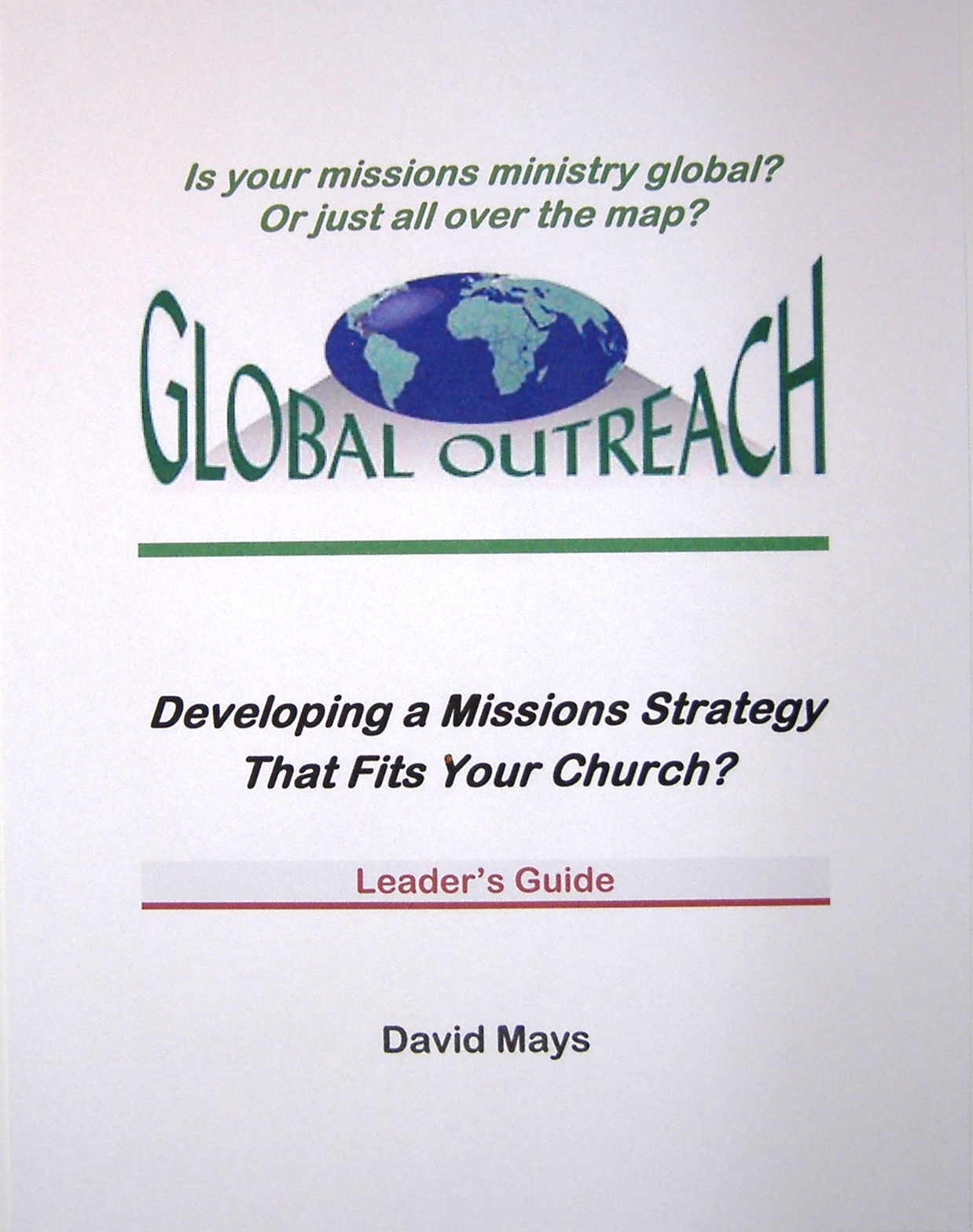|
|
|
|
|
MayDeve 07-12-128 Developing a Missions Strategy
that Fits Your Church A resource
(on CD) for church leaders and consultants David Mays David Mays,
2007, v. 1.0, many pp., |
|
|
|
David Mays is the
Director of Learning Initiatives for The Mission Exchange, formerly the
Evangelical Fellowship of Mission Agencies.
For more than twenty years he has helped church leaders strengthen their
missions commitment and effectiveness through teaching, writing, and consulting. David and Marcy live in Indianapolis and
enjoy reading, writing, and grandchildren.
This resource
is designed to help church leaders develop a missions strategy. It may be used by an outside consultant or an
inside leader to
- Lead a strategy development workshop
for one or more churches.
- Facilitate an ongoing process
of developing a missions strategy for a church.
It will
help leaders
·
Select
the team who will put together the strategy
·
Understand
how to begin the process
·
Uncover
and resolve unspoken values
·
Learn
what they need to know
·
Find
key resources
·
Review
or establish the biblical foundation for missions
·
Define
missions
·
Build
on their church's purpose
·
Recognize
major issues to consider
·
Identify
strategic missions priorities for their church
·
Outline
the strategy document
·
Set
goals
·
Identify
implementation steps and cautions
This CD is more
than a book: it is a full-orbed resource.
It is based on and includes material David has been collecting and
teaching for several years. A leader's
guide (which is a book in itself) and PowerPoint slides are included for
teaching a workshop or facilitating a consultation. A participant workbook is included for
participants who attend a workshop or participate on a strategy development
team. There are multiple documents containing
Scripture verses, missions definitions, budgeting and funding grids, survey
forms, and sample church strategies. A
strategy template, individual worksheets, and numerous supplemental articles
and resources are also included.
The Leader's Guide
is punctuated by calls to prayer, recognizing that God's ways are not our ways,
and that God will be delighted to direct us as we are willing to surrender our
vested interests to His guidance.
The materials are
divided into three sections, process, content, and implementation. The content section is the best thought out
and has the most material. Mays divides
the content of a strategy into two parts a) primary inputs that provide the
foundation and b) secondary inputs that help establish priorities.
A study of four
primary inputs - Scripture, scope of missions, church purpose, and needs of the
world - are meant to lead church leaders to discover their missions
destination: "What does God want to accomplish in the world through our
church?"
Secondary inputs
help a church think through how to establish the priorities that fit their
church and that will enable them to maximize their efforts toward the
destination. Church leaders will select
the four or five secondary inputs that are most significant for their church
and think through what their particular position should be with regard to those
inputs.
Secondary inputs
include:
● Audiences – Whom do you seek to reach?
● Ministry Tasks – What most needs to be
done?
● Balance – How much local? How much global?
● Focus – A beacon or a thousand points of
light?
● History – Do you need gradual or radical
change?
● Relationships – Do you support only those you
know?
● Our Roles – What ministries best fit your
congregation?
● Partnerships – Is it important to partner
with other groups?
● Participation – Do your members have to help
hands on?
The package would
benefit from some professional design work to carry a visual metaphor
throughout. Field testing by several
churches will likely to lead to improvements in consistency of flow and
language.
To purchase the
Strategy CD, send $35 in U.S. funds to David Mays, 7589 Burns Drive,
Brownsburg, IN 46112
* * * * *
Your comments and book
recommendations are welcome.
To discontinue receiving book
notes, hit Reply and put Discontinue in the text.
